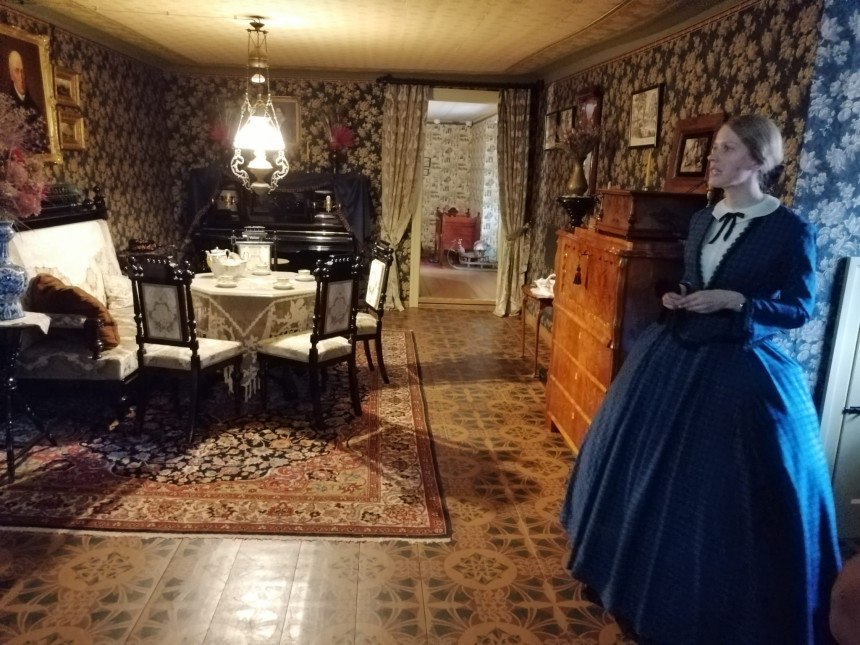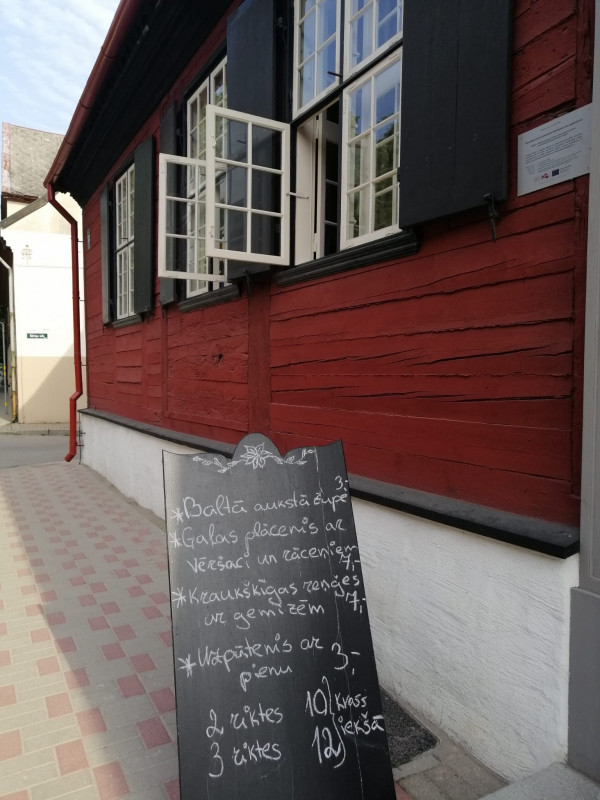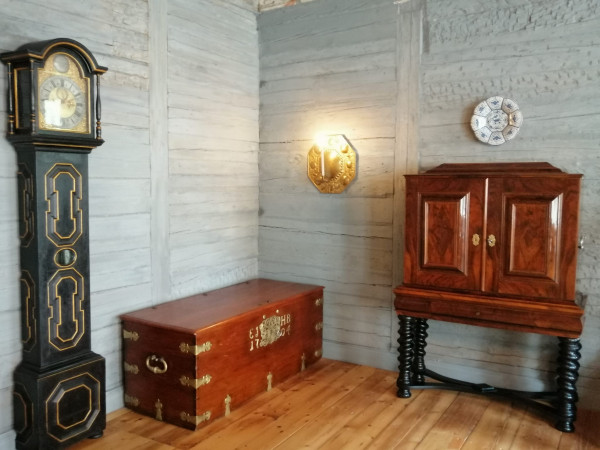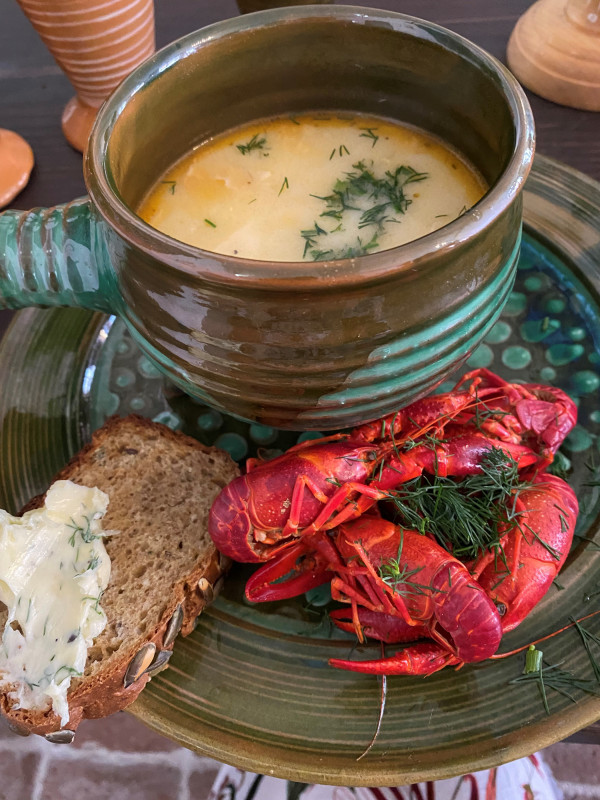What was Peter the Great doing in Liepāja?

After extensive restoration works, Madame Hoyer's Guest House, or Peter the Great’s House, opened in Liepāja at Kungu Street 24 in March this year, which attracts visitors with its historical facts and impressive museum collection, as well as a tavern with an exclusive menu of crayfish soup and testicles, rhubarb kvass and rose water. It took our group of friends almost four hours to visit the house and talk to the guide and the tavern girls.
History records the year 1697
Imants Lancmanis writes in his book "Liepāja from Baroque to Classicism": "Anno 1697 was a year of an alarming turn for Liepāja, and its strangeness and significance were warned by the unusual weather conditions. The previous winter had been so warm that the fields had been sown in March, but the summer had been cold and rainy. In 1697, the spring cold lasted longer, the trees did not leaf out until June, and in July the crops were bitten by frost. In that year, the construction of a new harbor was decided and started, the new town school at St Anne's Church was completed, and the sculptor F. Sefrenss installed a huge carved altar in the church itself, which remains unsurpassed in Latvia in terms of splendor. On May 10, the Grand Envoy of Russia, headed by Baron F. Lefort, visited the town on its way to Western Europe. Five days before, a group of Russian youths had arrived to study abroad with the Envoy. Among them was a tall young man, Peter Mikhailov. This was what Tsar Peter the Great asked people to call himself, trying to escape from the ceremonies and receptions in order to be able to study more quietly all that interested him in the civilization of the new-found Europe. Here, in the Green Pharmacy in Liepāja, he was surprised by salamander in alcohol and other unseen things, which probably gave the first impetus for the creation of Kunstkammer in St Petersburg. But there is no doubt that Peter the Great was more interested in practical matters than salamanders, above all shipping and trade. It was in Liepāja that he first saw the Baltic Sea, and perhaps it was here that the plan to open up a sea route to Western Europe for Russia matured... Peter the Great stayed in Liepāja in the hotel of the widow Hoyer and spent 7 days there, spending 653 guilders and 4 ½ groschens on food, strong drinks and service, together with his companions."

After a lengthy restoration, the Peter the Great House is now open, with a tavern on the ground floor, preserving the layout and furnishings of the time, and a 17th-century exhibition on the history of the building, which is best viewed with a guide. At the time, although Hoyer was known as a guest house, there were only two separate sleeping quarters, one of which was occupied by Peter the Great. Other travelers stayed overnight in the inn room on sacks or in the outbuildings in the courtyard, as a separate room was very expensive! Madame Hoyer was, it must be said, an unusually shrewd woman for her time, a lady of connections, so to speak, who was able to offer her distinguished guest not only potatoes and a piece of meat but, as the menu offered to Peter the Great shows, also fresh oysters and oranges.
How people lived in Liepāja in the 19th century

Over the centuries, the building built by the Hoyers has changed hands several times - in the 19th century, the Stenders family lived there, and one of the members of this family was also the Liepāja burgomaster. This historical fact is the reason why the second floor of the building, which was built after the change of ownership, was converted into living quarters for the wealthy class of Liepāja. The guide greets you in period costume and can tell you about every single thing you see; you'll be surprised how small children were then - a ten-year-old's boots would fit a five-year-old today. The sledges, tricycles and baby carriages also look more like playthings than practical objects.
The restoration has gone a long way to preserving authenticity, for example, the wallpaper is based on old drawings found on the walls and specially commissioned in Europe, where old-style wallpaper printing equipment survives, the stoves have been completely rewalled and are functioning, and the lost pots have been replaced with newly made replicas.
An exhibition in the basement tells the story of the restoration of the house and the objects found.
Start with crayfish soup!

After a guided tour of Liepāja's history in the 17th and 19th centuries, a great meal is offered in Madame Hoyer's tavern, where crayfish soup is undoubtedly the most popular dish. A little advice from personal experience - if you are not a big eater, the soup and a small dessert will be quite enough, as it will be impossible to finish the soup plus a piece of roast or testicles with chanterelle sauce and new potatoes. To avoid confusion and to understand what to order, as the menu is written in Germanic jargon, feel free to ask the tavern girl! We realized that we would have to go back to Liepāja again soon, as we missed out on the escargots, frogs and other exotic dishes. Kudos to the tavern girl for the delicious rhubarb kvass, the recipe of which she won't reveal.
Thanks also to the two guides and to the overall atmosphere of the house, which makes you feel like a welcome visitor.
